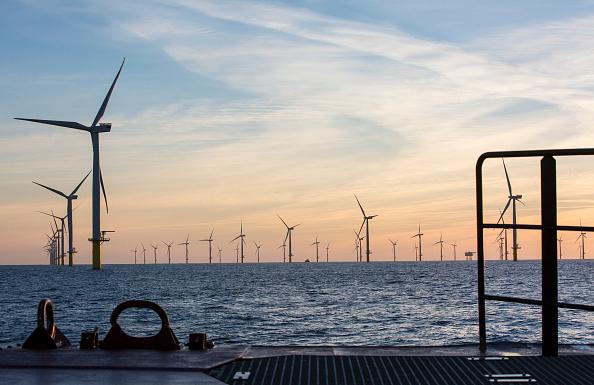Germany's Offshore Wind Turbines Continue To Exceed Expectations
Germany is continuing their expansion in the offshore wind farm industry. They're expecting to activate over 900 megawatts of capacity by the end of this year. If they do, they're on pace to beat the goal of 6.5 GW of total capacity by 2020.
Updated May 26 2019, 9:06 p.m. ET
Germany is one of the world leaders in offshore wind farming. Along with the United Kingdom and Denmark, they have multiple gigawatts of capacity scattered throughout the country. At the rate of growth wind energy has had over the years, they’re expected to surpass the government’s goal of 6.5 gigawatts by 2020.
Through the first half of 2017, Germany has successfully powered on 626 megawatts of offshore wind farms and that total should hit 900 megawatts by the end of the calendar year according to Reuters. That’s more than the 818 megawatts added in 2016. Slightly over 4,700 megawatts of capacity is now available in the country.
Sandbank was the first to fully connect to the grid in late January. The project was completed over three months ahead of schedule and is located around 55 miles west of the island of Silt. Capacity sits at 288 megawatts with some of the farm being activated last summer. According to 4coffshore, Sandbank generates enough energy for roughly 400,000 households and it “produces 700,000 tons less CO2 emissions annually.”
Veja Mate, which registers at 402 megawatts, was the most recent farm completed in late May. This project is located in the German North Sea and contains a whopping 67 turbines. Similar to Sandbank, this was completed nearly four months ahead of schedule, taking less than 15 months to construct.
Two other wind farms, Nordsee One and Wikinger, are scheduled to be activated later this year. Both of them list an expected capacity of 682 megawatts combined, but some of that is already connected to the grid.
In order for the offshore wind industry to fully take off, it needs to rely less on government subsidies. That’s part of the reason the United States has been very slow at adopting the renewable energy. Other factors include extremely high costs and efficiency concerns. However, Germany is looking toward building future wind farms with zero subsidies.
The country approved another project in the German North sea, which will be close to 1.5 gigawatts of capacity. This new offshore wind farm will be backed by local utility company EnBW and Dong Energy. The latter company cited continuing falling costs to be able to complete the new facility, which is expected by 2024. In a recent news release, Dong shares their belief that turbines will be “double the size of the largest current models.” This means less turbines needed, and therefore less money to build more of them.
Should these costs not falter to the level of Dong’s liking, they have the ability to back out of the latest project. However, Germany is still ramping up their goals and expecting offshore wind power to be more commercially viable in the future. If it does, Reuters suggests that the country could see at least 30 gigawatts of capacity on this renewable source alone by 2035.
